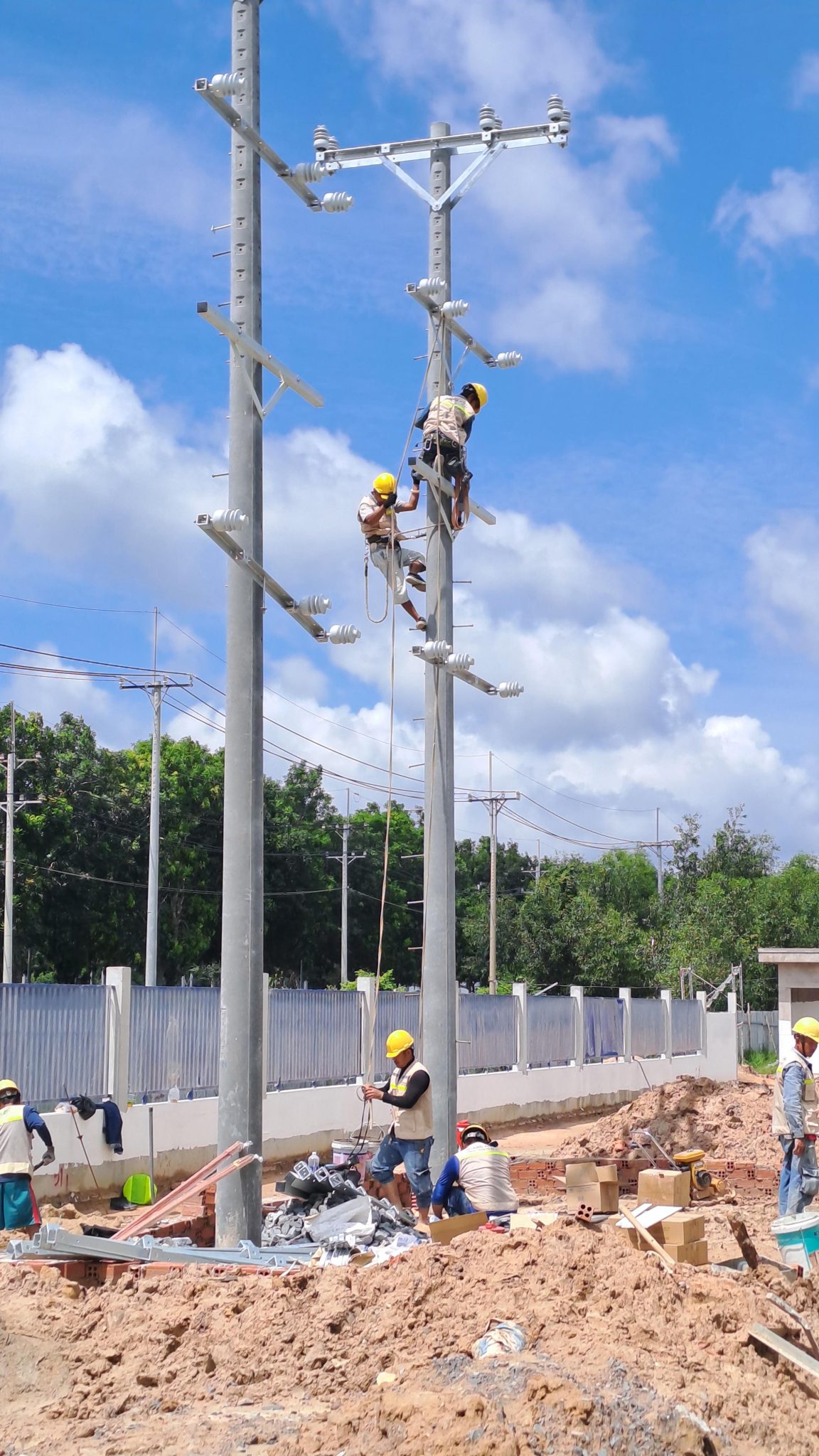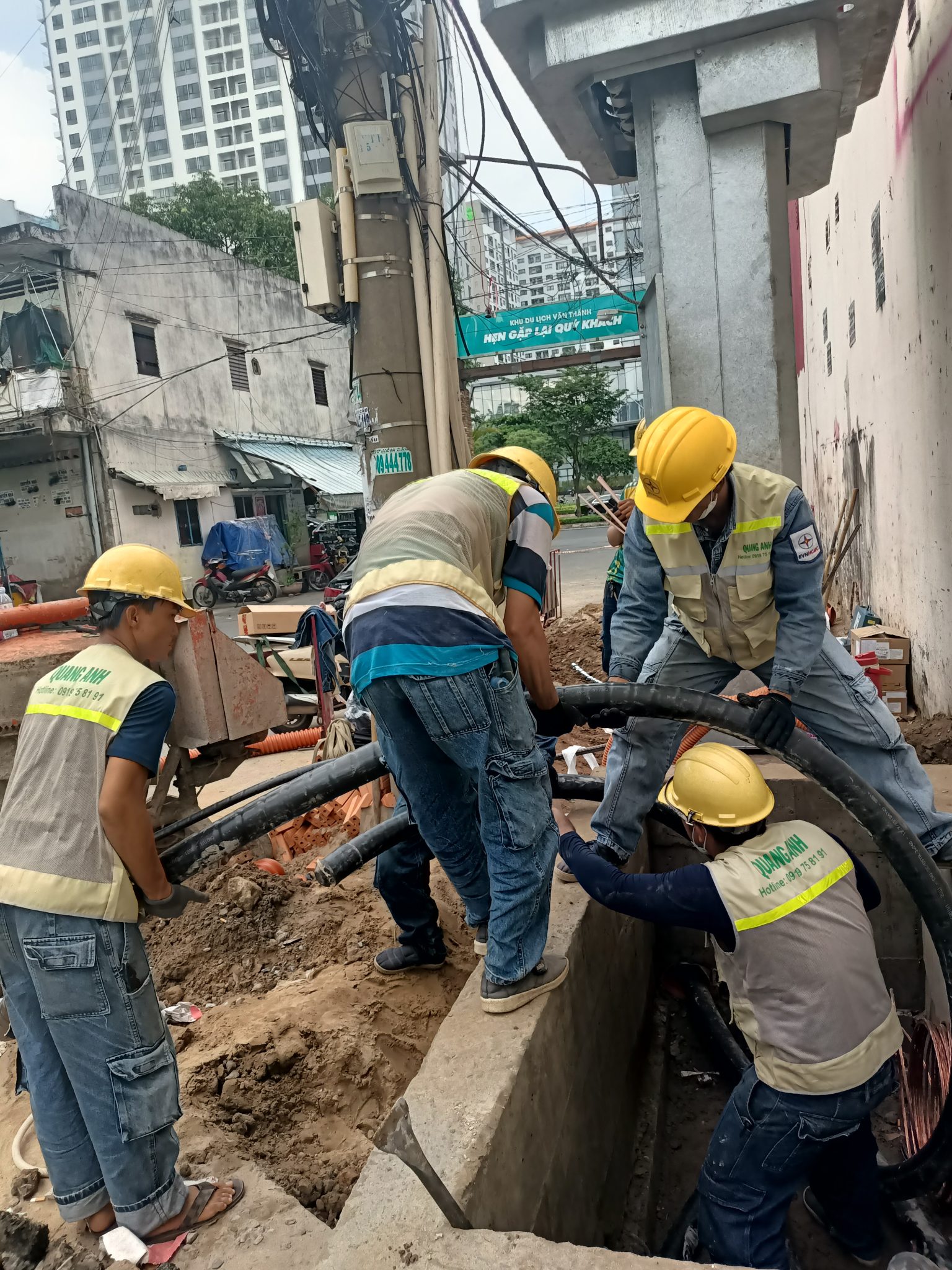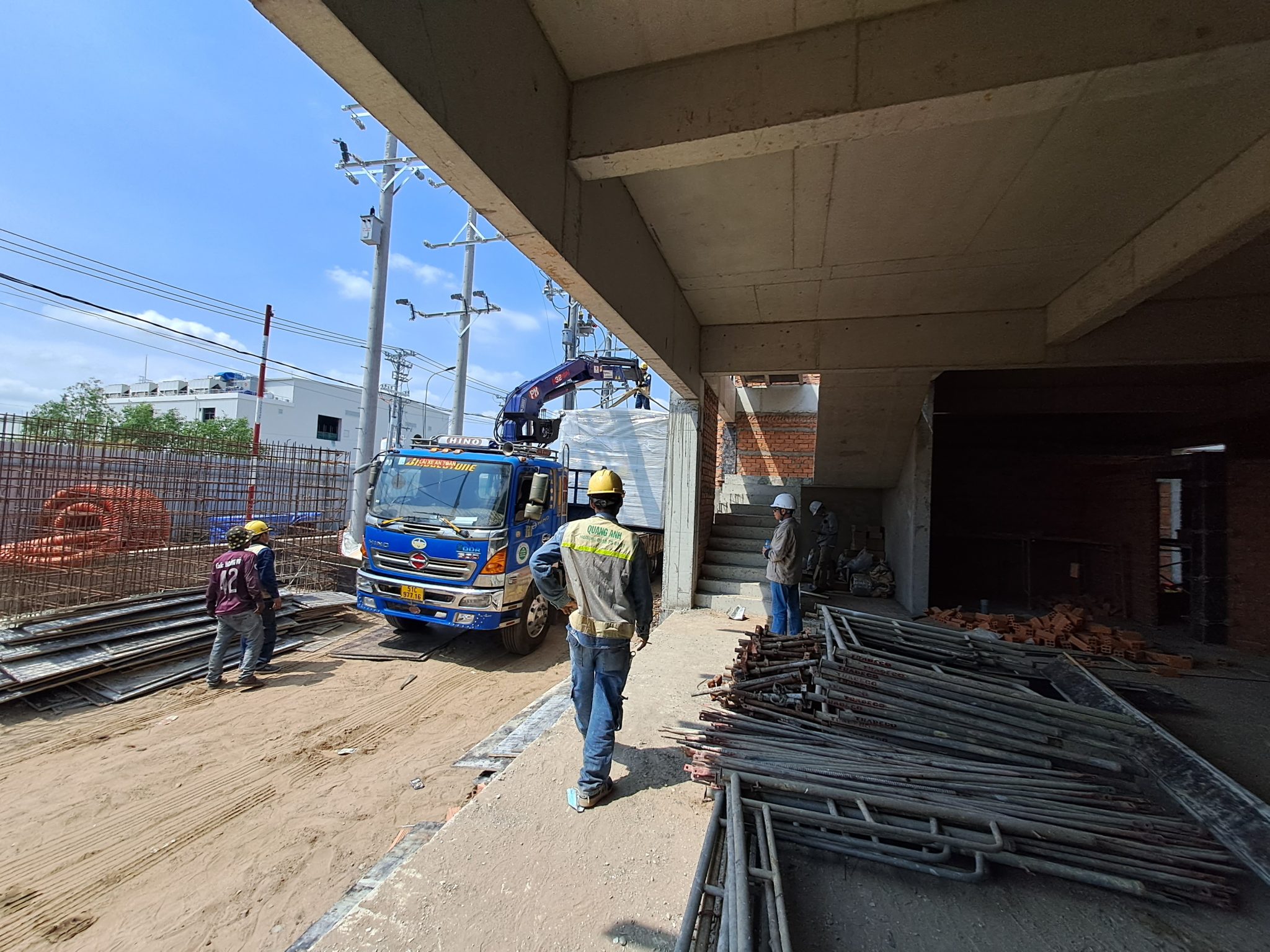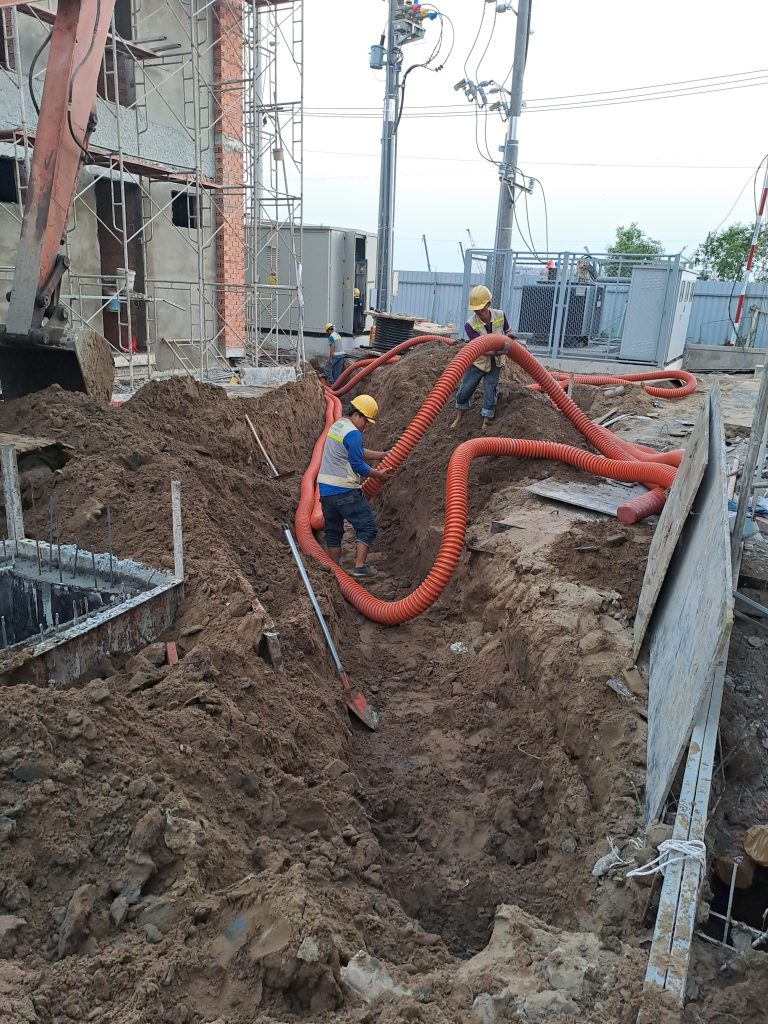News
Solar Power System Quotation 2025: Benefits and Costs
In 2025, the quotation for solar power systems in Vietnam is clearly regulated under Decision 988/QD-BCT of the Ministry of Industry and Trade. This article offers an in-depth look at the solar power pricing framework, installation costs, and technical considerations for this system.
Solar power electricity pricing framework 2025
The solar power electricity pricing framework for 2025, established by the Ministry of Industry and Trade under Decision 988/QD-BCT, provides purchase prices for electricity from solar power systems based on type and region. The maximum price set for the South is 1,012 VND/kWh for ground systems without battery storage and 1,228.2 VND/kWh for floating systems. For systems with battery storage, prices will be higher corresponding to the storage ratio. This pricing encourages households and businesses to invest in solar power to save costs and increase long-term economic efficiency.
With Decision 988/QD-BCT of the Ministry of Industry and Trade, the solar power generation price framework for 2025 is clear in terms of technical aspects, especially in distinguishing between different types of plants and geographic areas. This reflects the complexity of implementing solar power systems in Vietnam.
Solar power systems without battery storage
In systems without battery storage, solar power prices are determined as follows:
- Ground solar power: Northern Region 1,382.7 VND/kWh, Central Region 1,107.1 VND/kWh, Southern Region 1,012.0 VND/kWh.
- Floating solar power: Northern Region 1,685.8 VND/kWh, Central Region 1,336.1 VND/kWh, Southern Region 1,228.2 VND/kWh.
Solar power systems with battery storage
For plants incorporating battery storage, electricity purchase prices are more favorable to encourage the use of this means to increase energy storage efficiency:
- Ground solar power: Northern Region 1,571.98 VND/kWh, Central Region 1,257.05 VND/kWh, Southern Region 1,149.86 VND/kWh.
- Floating solar power: Northern Region 1,876.57 VND/kWh, Central Region 1,487.18 VND/kWh, Southern Region 1,367.13 VND/kWh.
Technical specifications for battery storage systems
Part of this incentive involves specific technical requirements for battery storage. The battery system must have a minimum storage capacity of 2 hours of use and account for at least 5% of the total electricity produced by the plant. Moreover, the battery storage capacity should also be at least 10% of the plant’s capacity.
Why differentiate prices by region?
Applying prices by region reflects the state’s effort to adjust for specific geographic, climatic, and operational cost factors of each area to optimize costs and encourage reasonable investment. These factors directly affect the profitability and long-term sustainability of power generation projects.
This electricity pricing not only promotes the development of solar power energy storage systems but also ensures that renewable energy solutions are implemented effectively with maximum economic benefits.

Residential solar power system installation costs 2025
Residential solar power system installation costs in 2025 vary according to capacity, specifically from 40-45 million VND for a 5 kWp system. This means that households with monthly electricity costs over 1.5 million VND will see greater benefits from this investment, through reduced monthly electricity costs.
To maximize investment efficiency for solar power systems, accurately understanding installation costs is essential. According to data, solar power installation costs for residences in 2025 vary depending on capacity and equipment choice.
- Average investment costs: Systems range from 10 million to 20 million VND per kWp, depending on system type (grid-tied or with storage) and equipment quality. Grid-tied systems without storage usually cost 12 – 16 million VND/kWp.
For households, the system capacity range is typically from 3 kWp to 15 kWp, with overall prices as follows:
- 3 kWp: 33 – 45 million VND
- 5 kWp: 50 – 65 million VND
- 10 kWp: 95 – 160 million VND
- 15 kWp: 135 – 145 million VND
The installation area needed for each kWp is about 6-8 square meters. This system can generate an average of 4-5 kWh/day, depending on the solar radiation intensity of each region.
When choosing a 10 kWp investment package, there are two main options:
- Standard package: 160 million VND, investment cost 16 million VND/kWp, with an average electricity generation of 18,542 kWh/year.
- Premium package: 233.4 million VND, investment cost 20 million VND/kWp, with an average electricity generation of 21,639 kWh/year.
The premium package includes higher efficiency equipment and may include additional quality solar energy maintenance services, with an average maintenance cost of only about 1 million VND/year. The payback period is usually under 7 years, enhancing the economic benefits of solar energy.
The solar power selling prices to the grid by region include:
- Northern Region: 1,382 – 1,572 VND/kWh
- Central Region: 1,107 – 1,336 VND/kWh
- Southern Region: 1,012 – 1,228 VND/kWh
Businesses considering investment will find that support from the grid selling prices can positively impact the overall financial plan.

Technical notes for solar power systems with battery storage
Solar power systems with battery storage bring numerous benefits to users by providing stable electricity even when there is no sunlight. To optimize electricity pricing, the system should have a minimum storage capacity of 10%, at least 2 hours of storage time, and a charge electricity output proportion of 5% of the plant’s total output.
Choosing and calculating battery storage capacity
For an efficient solar power system with battery storage, selecting the right battery storage is crucial. Battery capacity must be reasonable according to usage needs and system capacity. A solar PV system with too small battery storage cannot use up the energy produced, while overly large capacity would waste financial resources.
- Calculations should be based on daily electricity consumption, system capacity, and seasonal electricity output for an optimal decision.
- Battery capacity typically ranges from 1.2 kWh to 10 kWh and can be expanded by connecting multiple batteries.
Selecting battery type and technical characteristics
Choosing the type of battery plays a crucial role in the system’s efficiency. Lithium-ion batteries are very popular due to their high capacity and long life.
- Important specifications include capacity Ah, nominal voltage (48VDC or above), and maximum charge/discharge current.
- Understanding technical characteristics helps maintain stable and durable system operation.
Suitable inverter configuration
Correct inverter configuration is essential to optimize solar battery storage. Hybrid inverters are used to manage DC to AC conversion, charge batteries, and send surplus energy back to the grid.
- In case of system upgrades, the current inverter can be replaced with a storage-capable inverter, or an AC/DC coupling unit can be used to preserve the existing system.
Battery storage connection methods
There are two main connection methods:
- DC coupling: Battery and controller are connected after the solar array. DC flows through the charge controller to the battery, then converts to AC for load use.
- AC coupling: Uses an AC/DC coupling unit, allowing independent operation of inverters and storage, facilitating easy upgrades.
Other technical issues during installation
Regular monitoring and adjustment are crucial to ensure optimal system operation.
- A battery management system (BMS) is necessary to avoid overloading, over-discharging, or overheating.
- The battery installation location should be cool, not directly exposed to sunlight to prolong equipment life.
- Adjusting the direction and tilt angle of solar panels maximizes energy collection.
System expansion and upgrade
System expansion can include adding more panels and battery storage to meet growing demand.
- Upgrade inverters and control equipment to ensure compatibility and optimal operating efficiency.
- Additional battery storage can be added after the system stabilizes to keep up with increased usage.

Investing in solar power systems in 2025 offers significant benefits in cost savings and stable energy supply. Regulations on purchase prices and installation guide long-term investment and enhance economic efficiency for households and businesses.
For more details on pricing and benefits from solar power systems, contact QuangAnhcons via hotline: +84 9 1975 8191.
QuangAnhcons specializes in providing quality solar power system installation services, ensuring compliance with regulations of the Ministry of Industry and Trade and offering cost-saving energy solutions for customers.

 Tiếng Việt
Tiếng Việt 简体中文
简体中文 Deutsch
Deutsch 日本語
日本語 한국어
한국어 ไทย
ไทย Русский
Русский Français
Français
